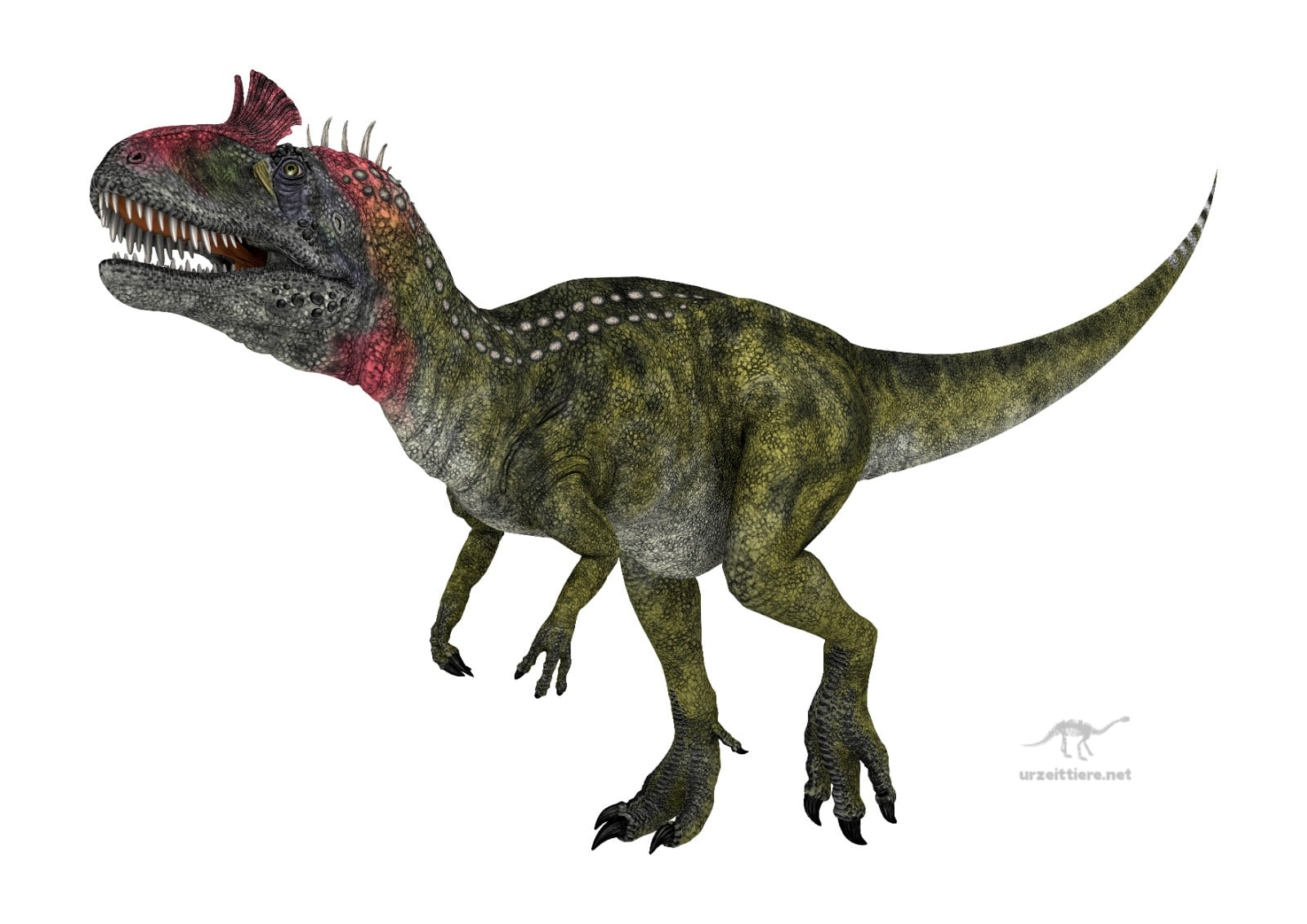
Cryolophosaurus was a 6 to 7 meter long theropod with slender proportions.
It is one of the earliest carnivores found to date. Weighing an estimated 465 kilograms, it is currently the largest known theropod from the early Jurassic. The specimen found is believed to be a juvenile animal. Adult animals of this species could thus have been larger.
Like all theropods it moved bipedally. On its forearms it had three fingers armed with claws.
| Profile | Cryolophosaurus |
|---|---|
| Prehistoric Era | Lower Jurassic 199.3 to 182.7 million years ago |
| Order | Saurischia |
| Suborder | Theropoda |
| Family | Neotheropoda |
| Tribe | |
| Genus | Cryolophosaurus |
| Species | Cryolophosaurus ellioti |
| Height | 2 meters |
| Length | 6 - 7 meters |
| Weight | 485 kilogram |
| Territory | Antarctica ; Hanson Formation |
Its unusual crest for a theropod gave it the nickname "Elvisaurus". The bizarre crest is indeed reminiscent of Elvis Presley's curl.
In 1986, remains of an armored dinosaur were discovered on James Ross Island, but it was first characterized in 2006 and given the official name Antarctopelta olivero.
Cryolophosaurus, on the other hand, is the first theropod found in Antarctica and was scientifically described and named in 1994. It was uncovered after Antarctopelta, but it was named earlier.
It was discovered and excavated in 1991 at an altitude of 4100m!, only 640 km from the South Pole.
The excavation was carried out by William R. Hammer, professor at Augustana College, and geologist David Elliot of Ohio State University.
They investigated separate outcrops near the Beardmore Glacier.
This separation of the investigation had a practical reason: it allowed the two scientists to share logistical costs.
The two researchers found the fossils in the pebbly siltstone of the Hanson Formation on Mount Kirkpatrick. It is one of only two productive dinosaur-bearing rock formations in Antarctica known to date. The second is the Snow Hill Island Formation.
The Hanson Formation is dated to the Pliensbachian (194-188.5 million years ago) of the Early Jurassic.
Since the discovery of the above two, other types have since been found.
One is the long-necked Glacialisaurus hammeri. First named by Nathan Smith and Diego Pol in 2007.
Second, the approximately 1.5 meter long Trinisaura santamartaensis, named by Rodolfo Aníbal Coria and colleagues in 2013.
The locality of Cryolophosaurus was during its lifetime in the Lower Jurassic 1,000 km further north. It belonged to the supercontinent Gondwana at that time. The world climate was milder than in today's time. In addition, the southern part of Gondwana was closer to the equator.
However, there were months with temperatures near or below 0 degrees Celsius, which leads scientists to believe that Cryolophosaurus was a warm-blooded animal.
Its habitat was probably forested and covered with dense plant material. Paleontologists suspect a wide variety of species.
Earthquakes and volcanic eruptions were nothing special for the creatures of this region, because the breakup of the Gondwana continent led to increased volcanic and tectonic activity.
It is possible that this carnivore hunted Glacialisaurus, especially young and diseased specimens.
However, since very few dinosaur species are known from Antarctica so far, this conjecture remains only a speculation.
Scientists do not rule out the possibility that Cryolophosaurus ellioti scavenged carcasses of dead animals.
Image source: Cover picture: urzeittiere.net
Skull: By WehaveaTrex - Own work, CC BY-SA 4.0, https://commons.wikimedia.org/w/index.php?curid=100416434
Size Comparison: Von Dibrangosaurus - Eigenes Werk, CC BY-SA 4.0, https://commons.wikimedia.org/w/index.php?curid=64319311